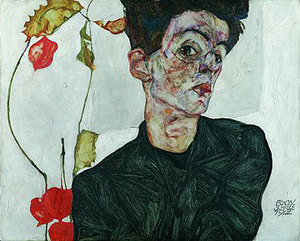Is it possible that some cities simply don’t deserve art? I hate to say that, but Las Vegas is making a great case for it. As I’ve written before, the city in the desert, with a metro population of about 1.8 million people, has watched its art museum close even as it supports a museum about the mob, with another one on the same subject going up nearby.
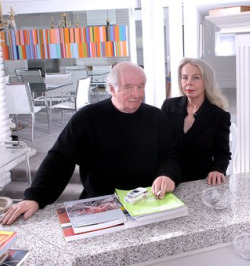 Today’s Wall Street Journal recaps more gory details: plans for a contemporary art museum were scrapped, a sculpture park on which the city spent $700,000 “sits empty,” awaiting private funds, and now two arts partrons — Dave Hickey and Libby Lumpkin, who “propelled the city’s artistic ambitions” — are moving out. Both academics, they’re joining the faculty of the University of New Mexico, because they could not find work in Las Vegas (particularly, a full-time post for Lumpkin at UNLV, which has a bad history in the arts).
Today’s Wall Street Journal recaps more gory details: plans for a contemporary art museum were scrapped, a sculpture park on which the city spent $700,000 “sits empty,” awaiting private funds, and now two arts partrons — Dave Hickey and Libby Lumpkin, who “propelled the city’s artistic ambitions” — are moving out. Both academics, they’re joining the faculty of the University of New Mexico, because they could not find work in Las Vegas (particularly, a full-time post for Lumpkin at UNLV, which has a bad history in the arts).
“They brought a lot of attention to the city,” said Elizabeth Herridge, who directed the Guggenheim Hermitage Museum at the Venetian casino in Las Vegas before that gallery closed in 2008. “This is such a visual city. It’s really kind of odd that we can’t have something that is a bricks-and-mortar expression of that interest.”
Odd indeed.
Hickey and Lumpkin were controversial — he once argued that the city’s rhinestone and neon culture have the “same excitement as highbrow fare,” for example. (And didn’t he also praise Thomas Kincaid?) But they were also movers. Aside from curating the collections of Steve Wynn, she directed the Las Vegas Art Museum, beginning in 2005, and took it “from a museum with a $300,000 budget, two paid staffers and a part-time curator into a $2.7 million organization with 13 employees.”
Their influence would be hard, maybe impossible, to replicate. As the article (here) says:
Soon after they arrived in 1990, the art on view in Las Vegas took a giant leap forward. When Mr. Wynn opened his Bellagio in 1998, he put his personal collection–with works by Van Gogh, Cezanne and Renoir–on display, part of a strategy to lure a high-end clientele.
The Venetian casino followed a year later with two Rem Koolhaas-designed art galleries run by the Solomon R. Guggenheim Foundation. One was also a partnership with Russia’s State Hermitage Museum.
But the experiment of putting art galleries in casinos was, for the most part, short-lived. Both Guggenheims closed. Mr. Wynn put an art gallery in his Wynn Las Vegas resort, which opened in 2005, but soon replaced it with a Rolex watch shop.
“It just didn’t seem to be that important,” Mr. Wynn said in a recent interview. A Rembrandt is hanging in his office.
An arts scene built on so slim a reed isn’t really sustainable. Las Vegas continues to show it deserves its reputation as a cultural wasteland.
Photo Credit: Courtesy Las Vegas Weekly

 This spring, the
This spring, the 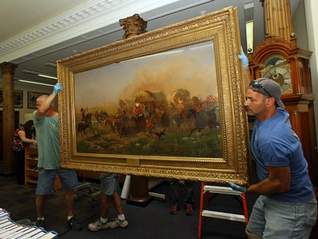 A few days ago, the
A few days ago, the  The Dover Library owns about 55,000 books, plus other reading/listening/viewing materials. Dover’s population is less than 18,000.
The Dover Library owns about 55,000 books, plus other reading/listening/viewing materials. Dover’s population is less than 18,000.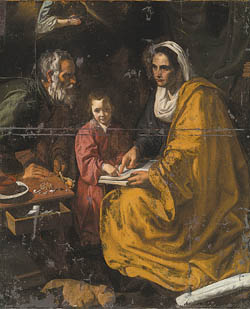 The painting, named The Education of the Virgin, at left, depicts the Virgin Mary learning to read — a fascinating image in its own right, and more so now that it is said to be Velazquez. It was executed in 1617, when he was only 18. It would certainly be among the earliest known works by him.
The painting, named The Education of the Virgin, at left, depicts the Virgin Mary learning to read — a fascinating image in its own right, and more so now that it is said to be Velazquez. It was executed in 1617, when he was only 18. It would certainly be among the earliest known works by him. 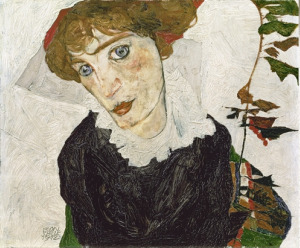 Memories came flooding back last week when Rudolph Leopold, the zealous collector of Egon Schiele (in particular), died. As I’ve mentioned, I wrote the
Memories came flooding back last week when Rudolph Leopold, the zealous collector of Egon Schiele (in particular), died. As I’ve mentioned, I wrote the 